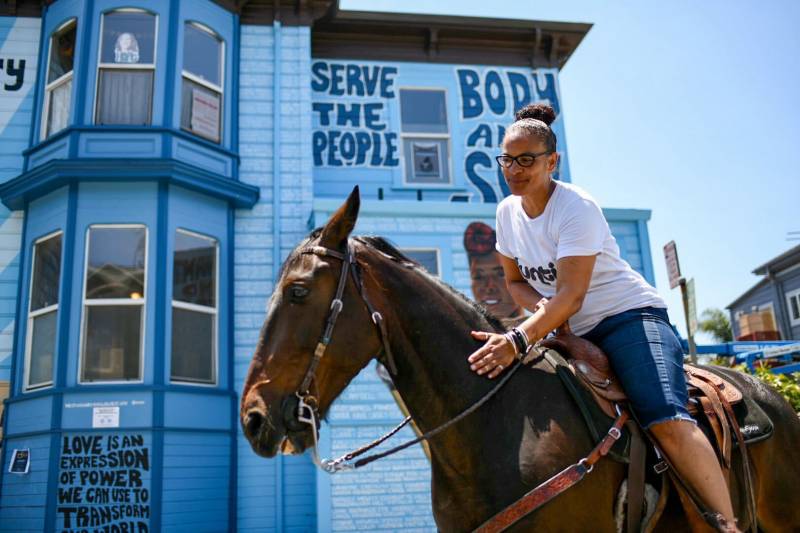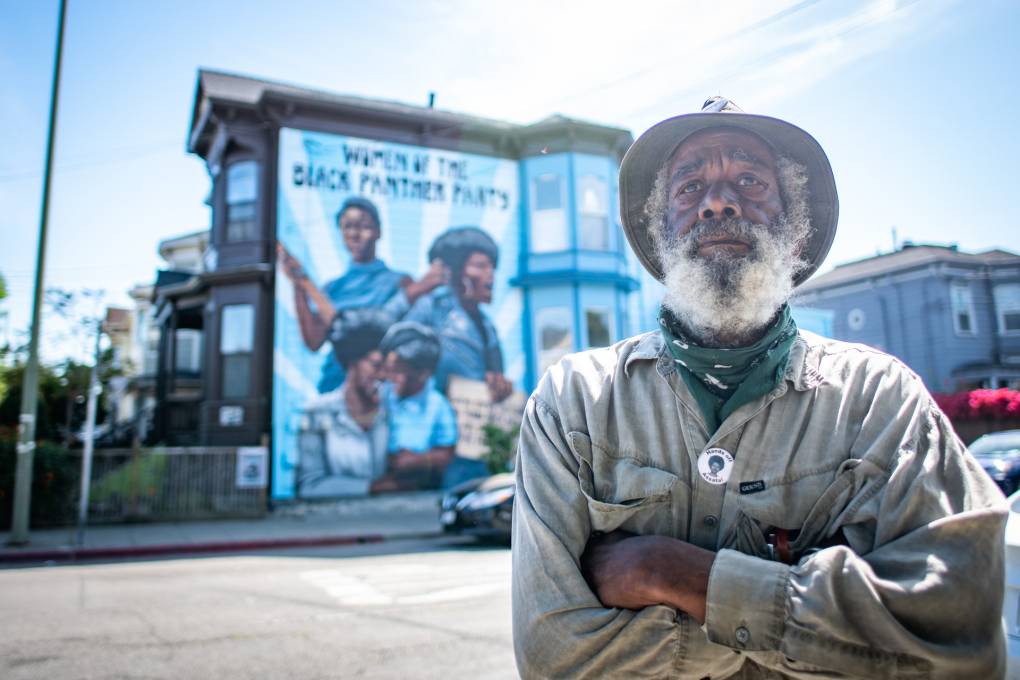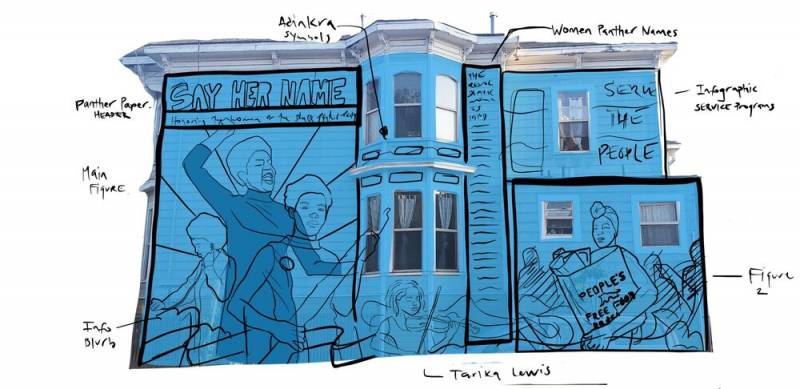In celebration of Juneteenth this year, The West Oakland Mural Project opened a small museum to highlight Black Panther Party history.
“It’s going to stay here for as long as I am able to sustain it,” said Jilchristina Vest, the visionary and owner of the house and museum, on what she’s calling a “mini museum.”
KQED’s Kate Wolffe spoke with Vest about what she hopes to share with the community, the significance of the location and what it means to open this weekend.

The following interview has been edited for length and clarity.
What can people find inside the mini museum?
Jilchristina Vest: The mini museum is a combination of several 8-foot banners that have a lot of beautiful photographs and a lot of really amazing information on them. There’s a lot of news articles — and information to take away, things you’ve never seen. A lot of it has been educational material that Ericka Huggins has used in classrooms, as well as museum exhibits and pop ups.


